
You may not know it, but many gardeners swear by Epsom salt as a secret weapon in their organic gardens.
It is generally better to focus on restoring or maintaining natural systems in your growing areas.
But using this matural ingredient to make a range of soil amenders and foliar sprays, and using it in a range of other ways, can help you keep you and your garden in good health.
In this article, we will discuss 20 uses for Epsom salt in the garden.
But before we delve into the different options for its use, let’s take a brief look at what Epsom salt is, and how, in broad strokes, it can help your plants.
What is Epsom Salt?
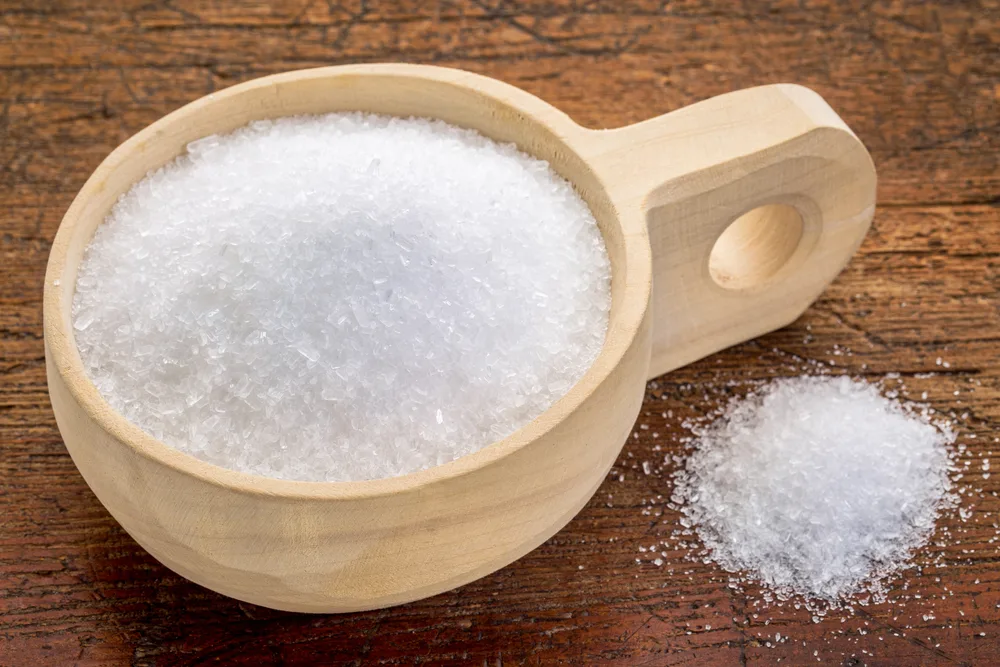
Epsom salt is a chemical compound that is made up of magnesium, sulfur and oxygen. It is also known as magnesium sulphate.
It has long been used in agriculture and gardening, and also has applications in other fields, such as the medical arena, brewing and food preparation.
You may be most familiar with it through its use in bath salts.
Why Epsom Salt Can Help Plants
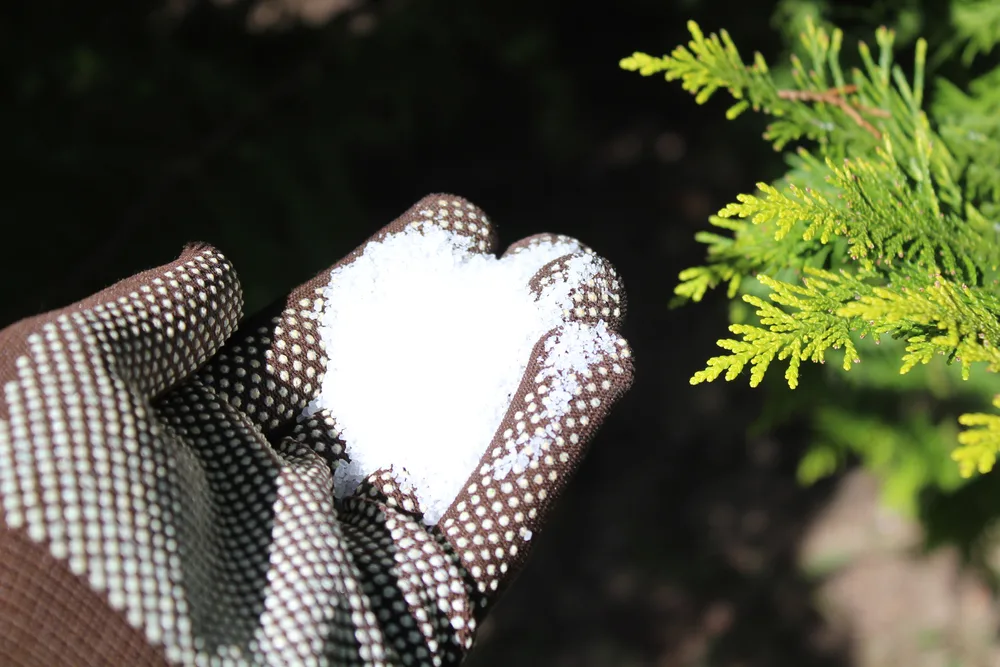
Magnesium and sulfur are two of the essential minerals for plant growth.
Magnesium is needed by plants to create healthy leaves and for photosynthesis.
Sulfur is one of the molecular building blocks for a number of different proteins, vitamins and hormones in plants. It also plays an important role in water equilibrium in plants (and in soil).
Epsom salts can be used to create soil amendments or in foliar feeds sprayed onto leaves (due to its high solubility) to provide these two essential ingredients for plant health.
In addition to being used in such ways, Epsom salt can also be used to deter or kill certain pests if a major infestation occurs, or certain wildlife is causing a major problem for you in your garden.
While it is generally better to take a more holistic approach to pests, having such organic solutions on hand as a short-term solution for pest control can be helpful in cases when things have really got out of balance.
20 Uses for Epsom Salt in Your Garden:
To help you understand how to use Epsom salt in your garden, let’s take a look at some of the uses to which it can be put:
1. To Give New Growing Areas a Good Start
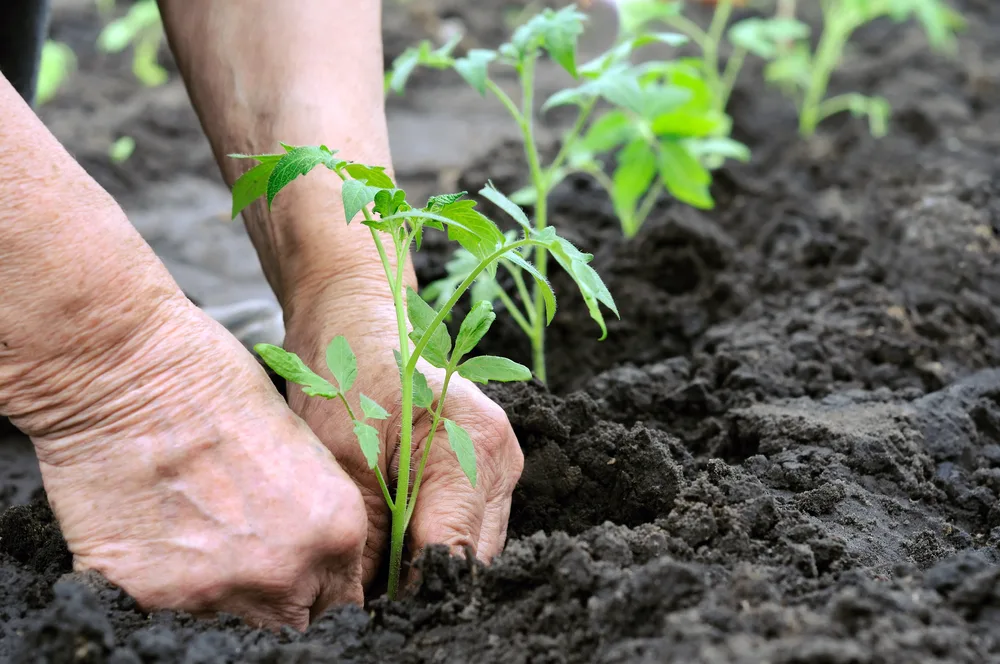
If you have created new growing areas in your garden, you can help things get off to a good start by incorporating some Epsom salt into the soil/growing medium.
This can be a good idea in areas where the soil has been made alkaline by high concentrations of sodium salts, for example.
Adding magnesium can help to improve the pH and make it closer to neutral.
Note, however, that it is generally a good idea to have a soil test done before applying nutrients to the soil, as if you get it wrong, you could do more harm than good.
If you have determined that adding Epsom salts to the soil is the right thing to do, broadcast 1 cup per 100 sq ft area and mix well into the soil before planting up the area.
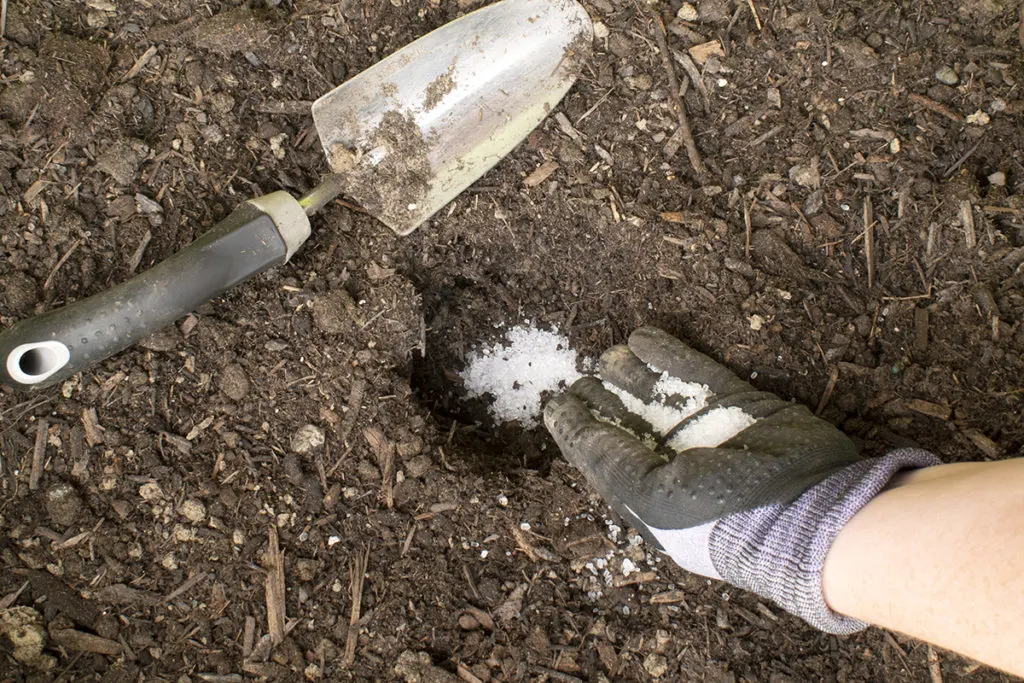
2. To Improve Seed Germination Rates
While it may not be a good idea to introduce larger quantities of Epsom salt into your soil without investigation, you could still consider adding a teaspoon or two to your potting mix when sowing seeds in order to give plants the best start possible.
Mixing a little into your soil/ compost can improve the germination rates, since magnesium is essential for successful germination.
3. To Aid in the Establishment of New Saplings and Trees
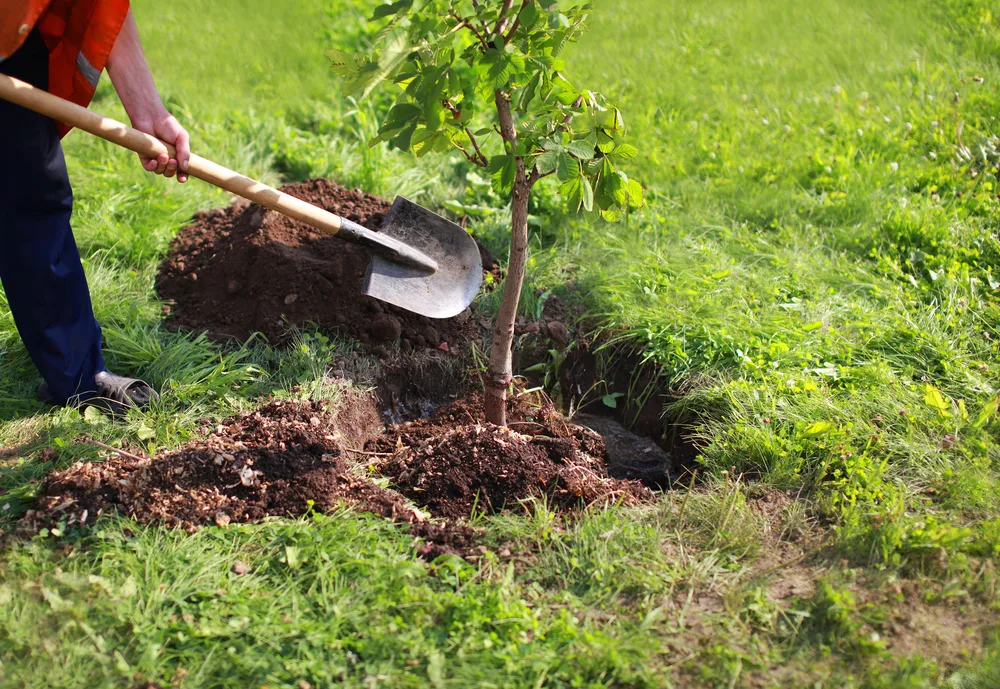
When planting new saplings or trees in your garden, you can help to make sure that they too get a good start in their new locations by adding Espom salts to the bottom of the planting hole.
Apply 2 tablespoons per 9 square feet around the rootzone of trees to help to make sure that they have the nutrients they need.
4. To Revitalise Your Mature Shrubs
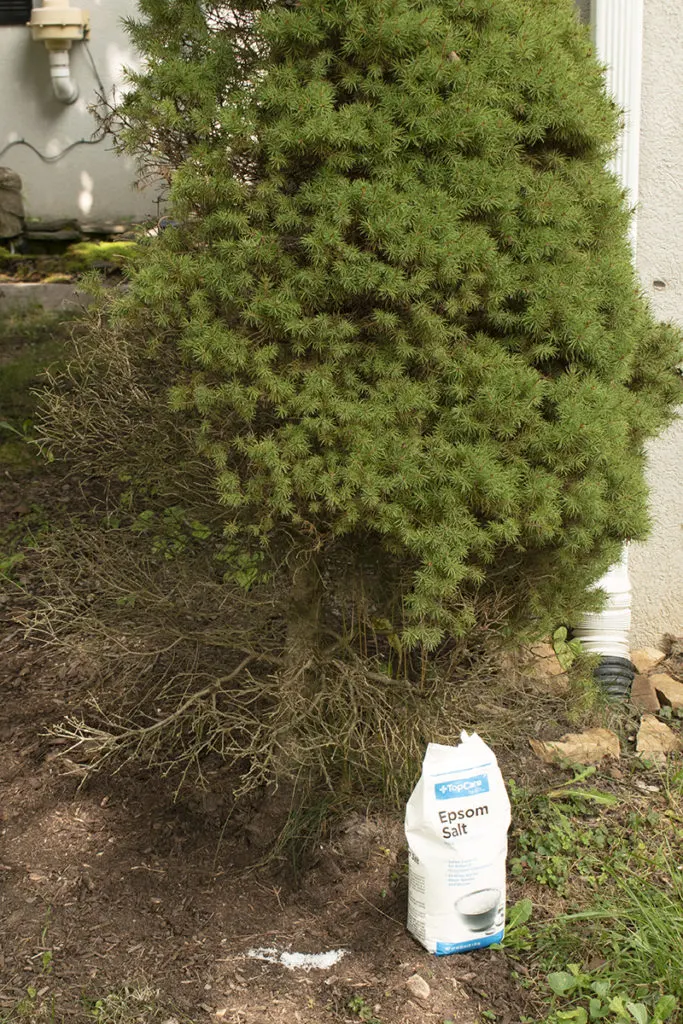
You can also use Epsom salts to revitalise mature shrubs in beds and borders.
If your mature shrubs are looking a little lacklustre, you can considering adding around 1 tbsp per 9 square feet around their root zones, and repeating one a month or so over the growing season.
5. To Rejuvenate Your Lawn
If you have a lawn that is beginning to look a little weary and faded, you can bring it back to full green good health by applying Epsom salts at a concentration of 3 lbs for every 1,250 sq ft.
You can add it with a spreader, or dilute the correct quantity in water and apply it across your lawn with a sprayer or watering can.
6. To Get Beautiful Blooms on Your Roses & Other Flowers
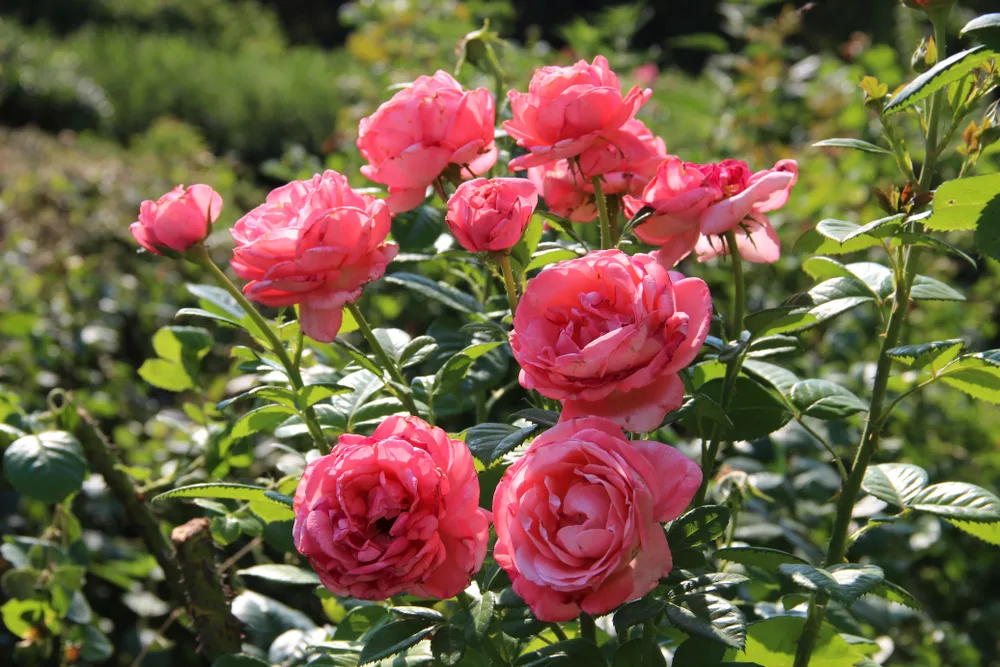
The magnesium in Epsom salts is key to producing beautiful flowers.
Tests by accomplished gardeners have affirmed that roses and other flowering plants fertilized with Epsom salts grow bushier and produce more flowers.
If your roses are not yet planted, you can soak them in an Epsom salt solution (1 cup per gallon of water) to help their roots to recover before planting.
You can also add a tablespoon to the planting holes before placing your plants.
With established rose bushes and other plants, you can also scratch ½ cup into the soil around their bases to encourage the formation of flowering canes and healthy new cane formation.
You can also add more as a fertiliser every fortnight through the growing season – at around 1 tablespoon per foot of plant height for each plant.
7. To Stop Azaleas and Rhododendrons from Yellowing
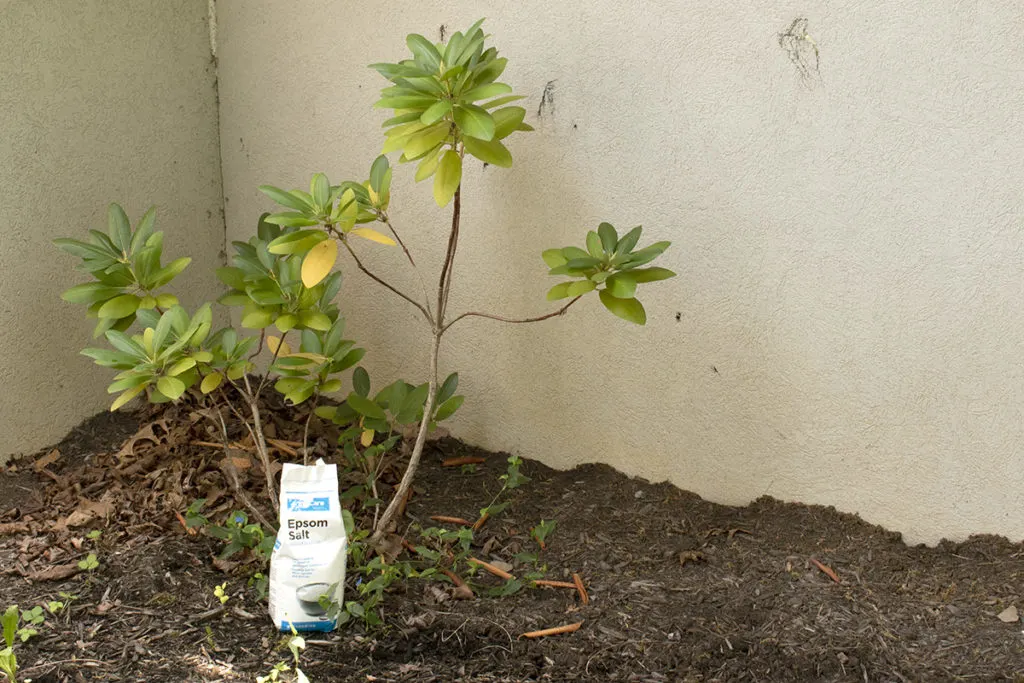
Azaleas and rhododendrons can be prone to yellowing on their leaves. This can often be a sign of deficiency, and so adding Epsom salts can help.
You can apply around 1 tbsp per 9 ft around the root zones of your shrubs every 2-4 weeks.
8. To Combat Leaf Curling & Yellowing on Your Other Plants
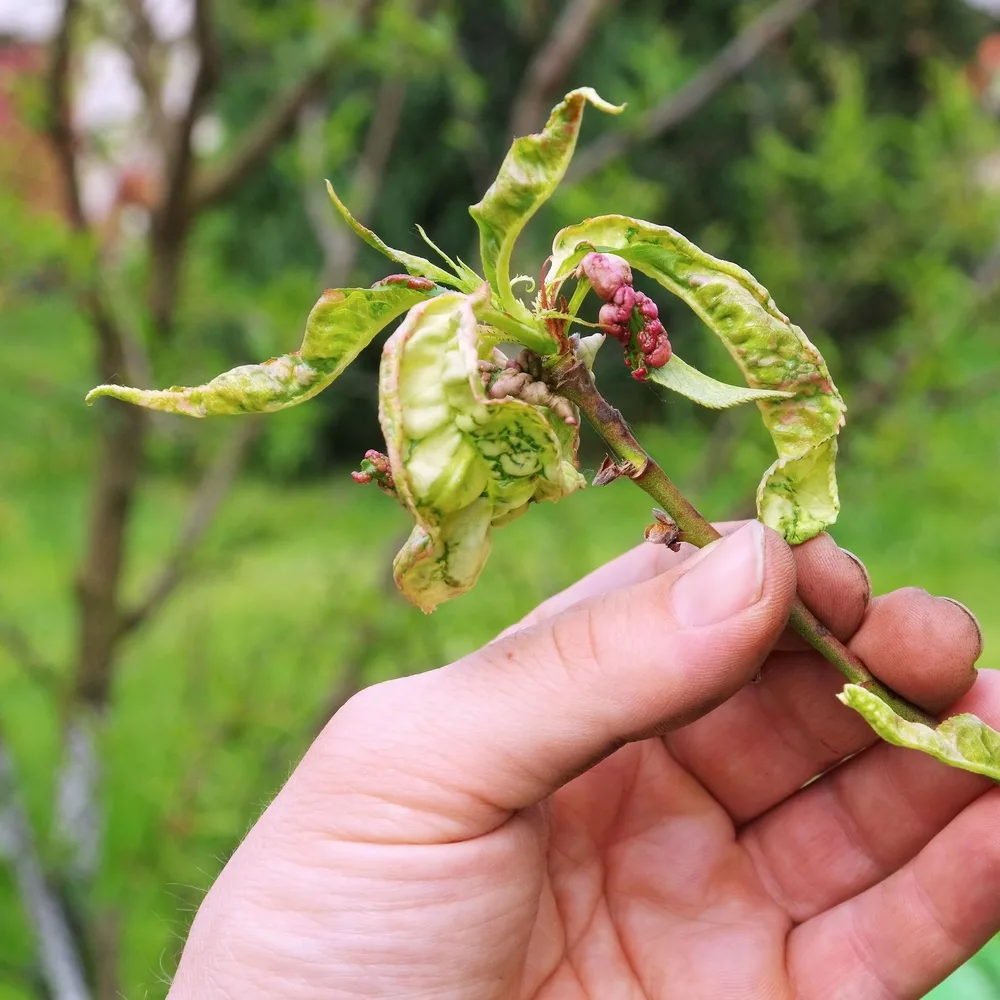
Azaleas, rhododendrons and similar shrubs are not the only plants that can suffer from magnesium and sulfur deficiencies.
It can be challenging to determine exactly what is wrong with your plants if the leaves begin to curl or to yellow.
But if you have ruled out other environmental problems (such as under or over watering) or pests, then trying a little Epsom salt (in moderation) could be a good idea.
Mix 1 tbsp with a gallon of water and spray this as a foliar spray directly onto the leaves of your plants.
9. To Give You Healthier, Sweeter Tomatoes
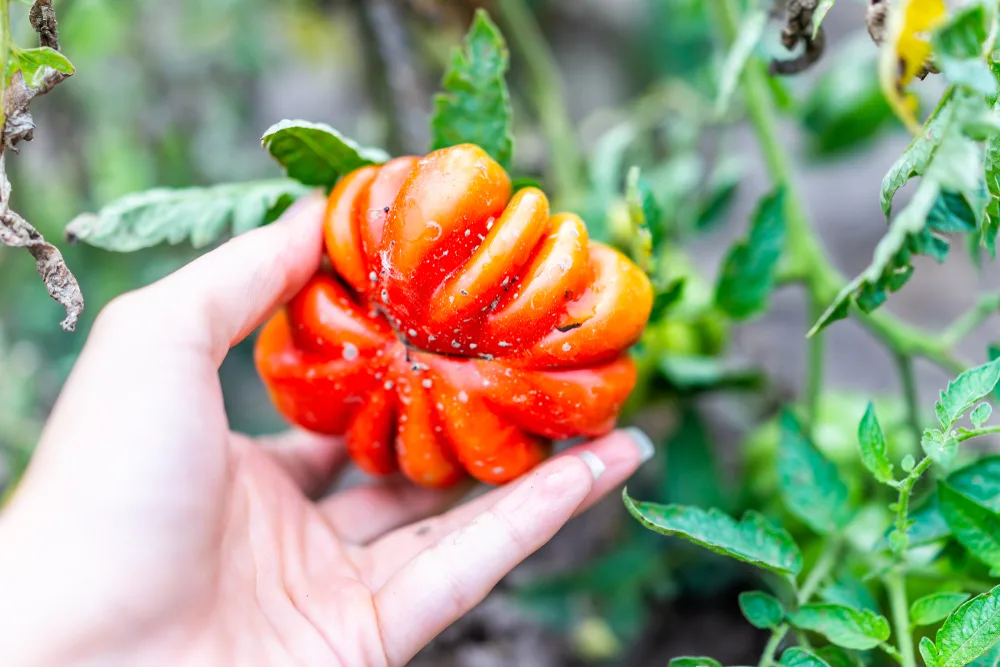
It is not uncommon to see magnesium deficiency in tomatoes grown in polytunnels with light and sandy soils.
The over-use of tomato fertilizers that are high in potassium can cause magnesium deficiency, as plants take up potassium in preference to magnesium.
On plants with a magnesium deficiency you will see yellowing between the veins of plant leaves, and sometimes reddish brown tints and early leaf fall.
Epsom salts can be used as a foliar feed in summer to remedy this deficiency.
Adding Epsom salts to tomatoes has been shown to result in more blooms, more fruit, stronger plants with lusher, greener foliage, and can even make the tomatoes taste sweeter. (Magnesium deficiencies can make the fruits lack sweetness.)
You can add 1 tablespoon of Epsom salts to the bottom of the planting holes when planting out your tomatoes.
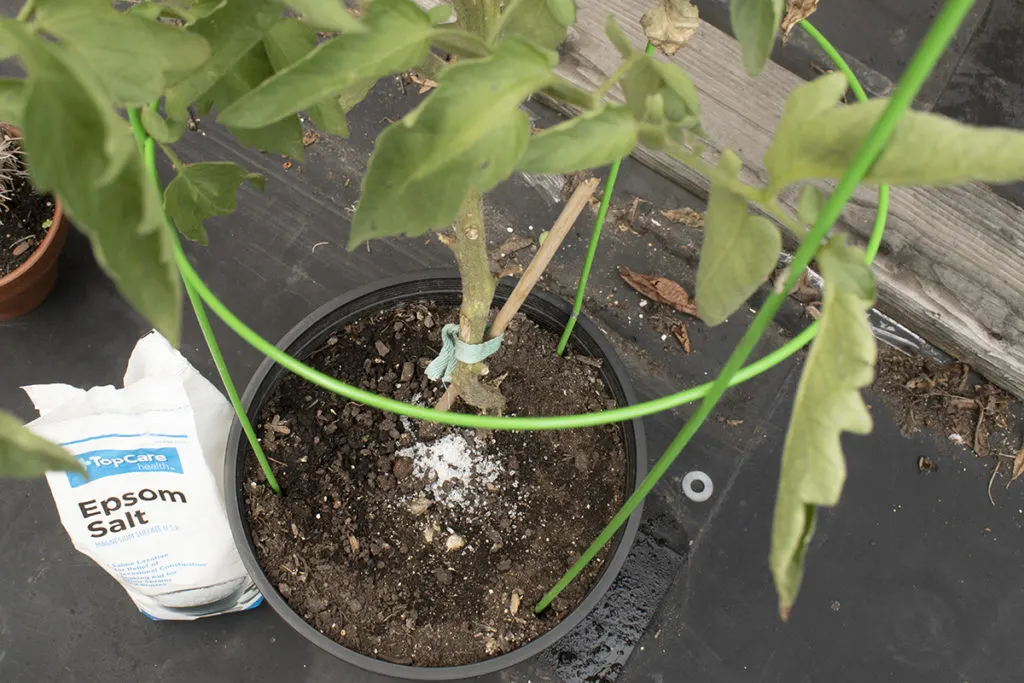
You can also add 1 tbsp to water to make a liquid feed, which can be added around every couple of weeks.
10. To Gain a Great Crop of Peppers
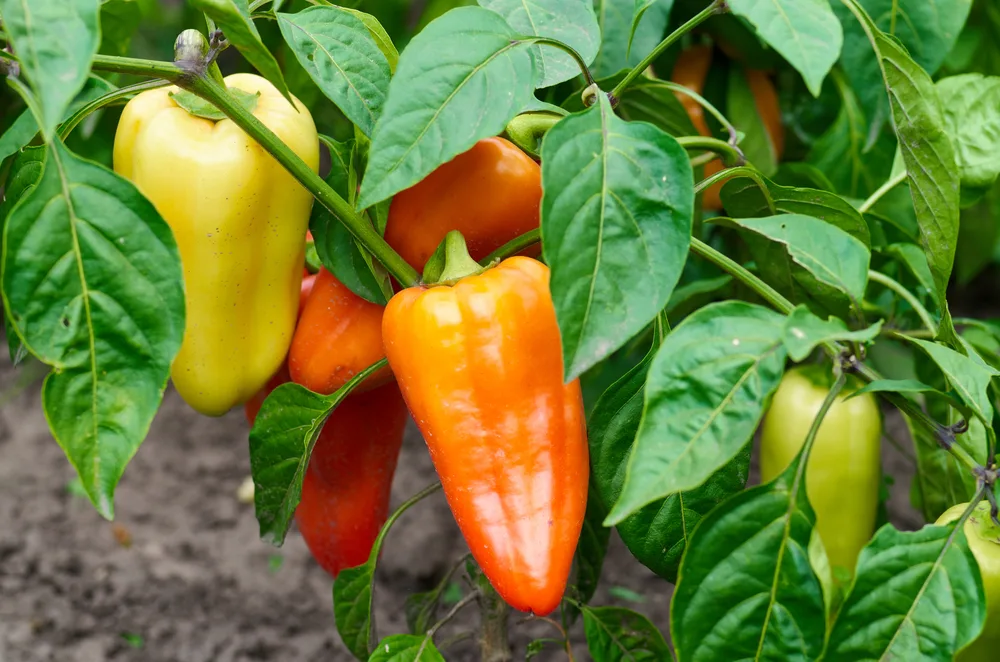
Peppers, in the same family as tomatoes, are another common crop that can also commonly suffer from magnesium deficiency.
Applying an Epsom salts fertilizer can aid their germination, growth and yields. (This is true for both sweet and hot peppers of a range of different varieties.)
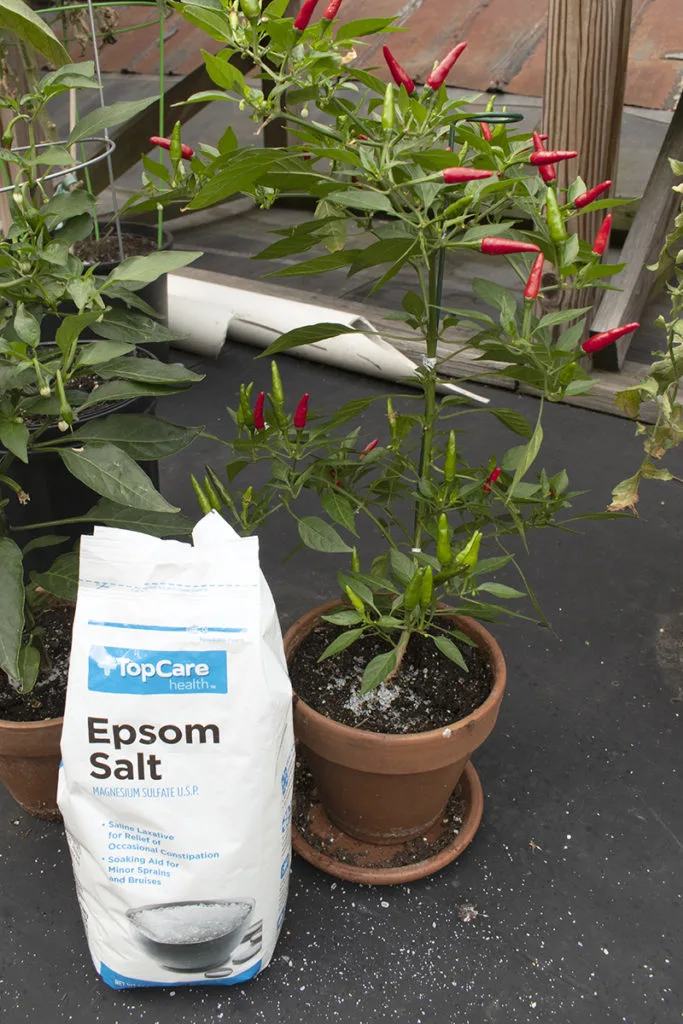
You can follow the suggested recipes for tomato fertilization given above to make sure that your pepper plants thrive.
11. For a More Bountiful Harvest From Fruiting Trees
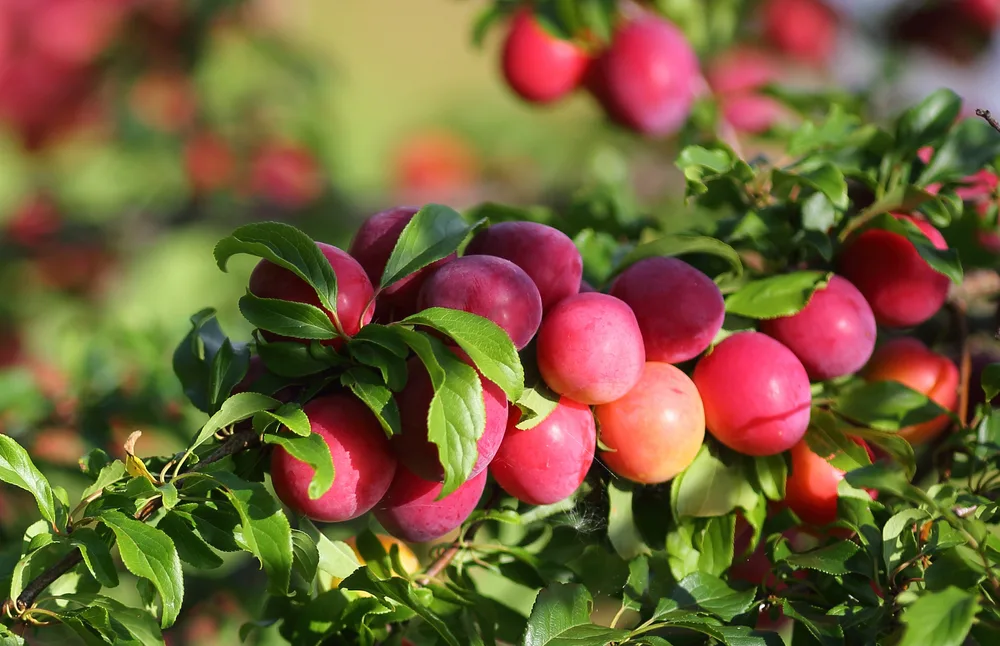
Fruit trees work hard over a relatively long period to produce their fruits.
Over this period, it is not uncommon in some areas for a magnesium deficiency to develop.
Epsom salts, applied at 2 tablespoons per 9 square feet over the root zone, three times between early spring and harvest time can make for stronger growth, improved photosynthesis, and more abundant and better tasting fruit.
12. To Soften the Blow of Transplantation on Your Plants
Sometimes, you will want to move plants from one location to another within your garden, or transfer plants from pots or containers into the ground.
Roots can be damaged during the moves, and transplant shock can occur.
Epsom salts can help to make each transition just that little bit easier, by giving a helping hand with chlorophyll production and improving nutrient uptake.
After transplantation, water the plants you have placed with a solution of 1 tablespoon Epsom salt in 1 gallon of water.
13. To Give Houseplants or Container Plants a New Lease of Life
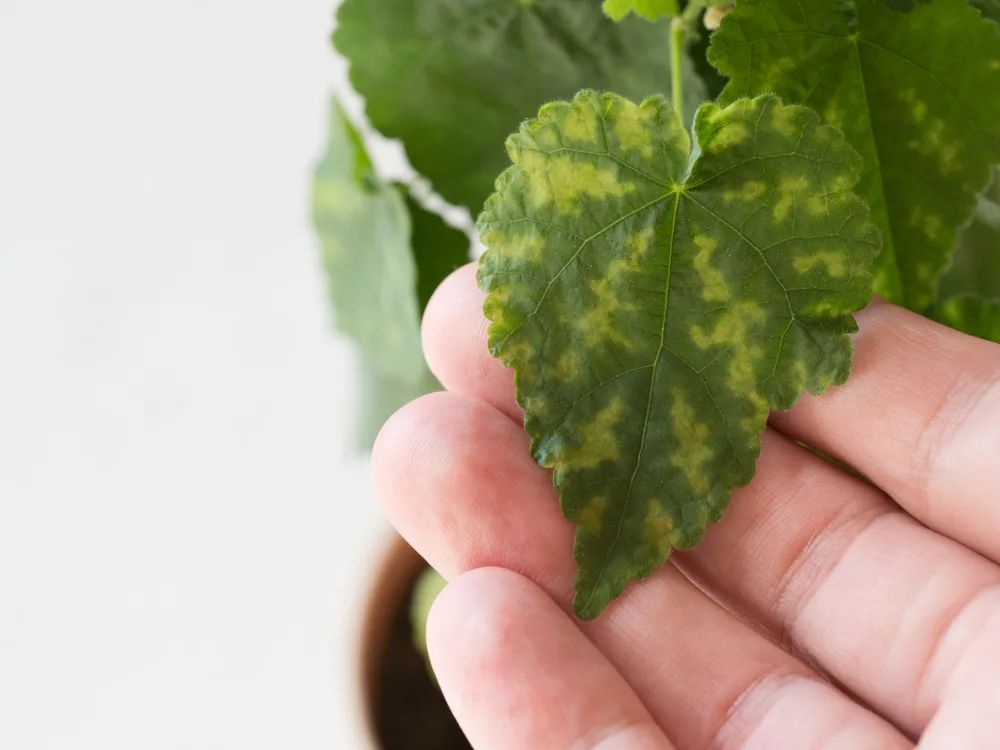
Sulfur deficiency is uncommon with in-ground growing, though can occasionally develop with plants grown in containers.
With sulfur deficiency, you may see de-colouration of the leaves and a strong purple colouration in the leaf stems.
Lowering the pH of the growing medium and adding sulphur are the main ways to remedy this deficiency. Using Espom salts is one way to remedy this problem with your houseplants or container plants.
To ensure the continued good health of houseplants or container plants, water them wit a solution of 2 tbsps in 1 gallon of water every month.
14. To Dry Out Tree Stumps Making Them Easier to Remove
It is not only the plants that can benefit from the use of Epsom salt in the garden. Using this useful substance can also make things easier for you – the gardener – in other ways.
Another use of Epsom salts is to dry out tree stumps, to make them easier to remove.
Drill holes 3-4 inches apart in the top of the stump. Pour the Epsom salt into the holes, then add water. Repeat this process every three weeks or so until the stump dies and can be more easily removed.
15. As Slug Control for a Serious Infestation
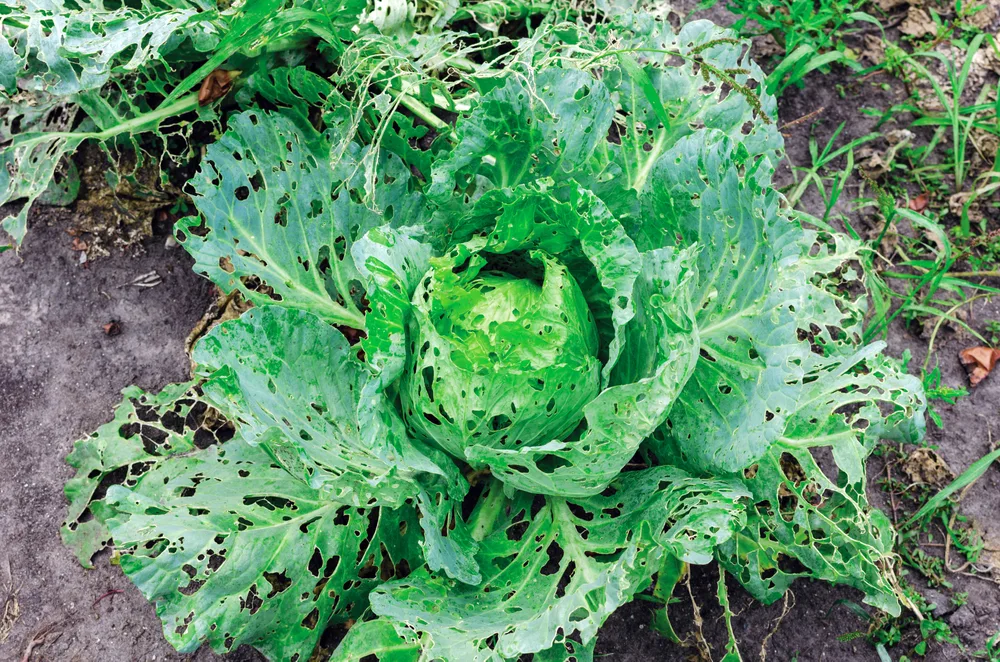
The best way to deal with slugs in your garden is to attract their natural predators (such as certain birds, frogs and toads, for example) into your space.
This will keep the balance that is essential to organic gardening.
However, if you have a serious infestation, you may need to reduce numbers now, short-term, too.
Sprinkle some dry Epsom salt where slugs slither and you can wave good-bye to the slimy pests.
16. As a Natural Insecticide For Aphids and other Unwelcome Insects
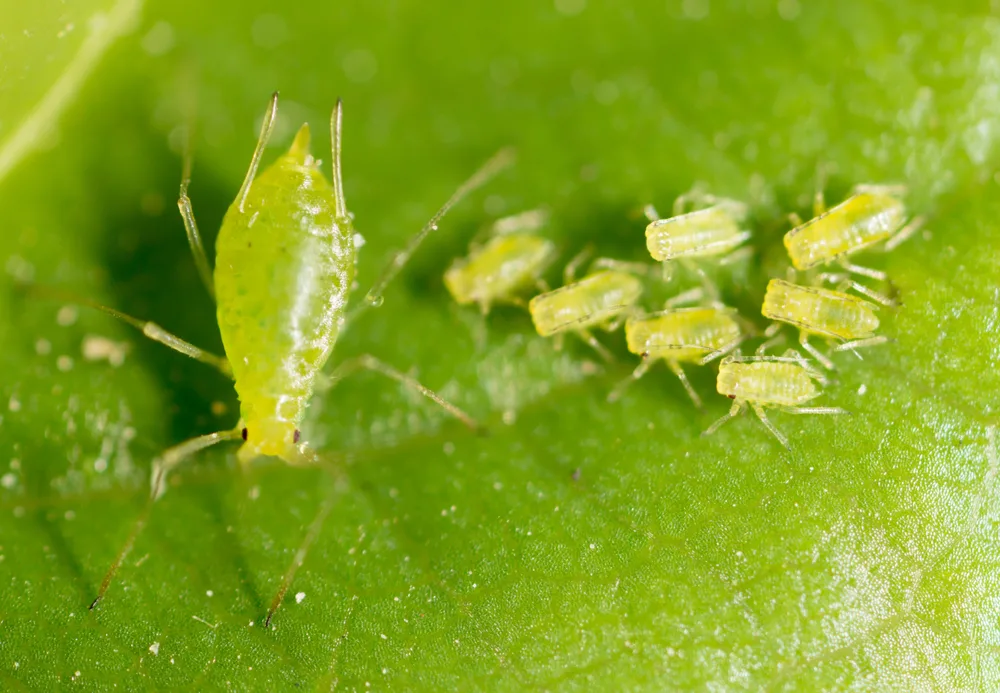
Another way to use Epsom salts in your garden is to control unwanted insects.
Mix one cup with 5 gallons of water and spray the solution onto plant leaves. This may help by deterring or killing certain annoying insects.
However, it is important to only employ such tactics as the ‘nuclear option’, as you may inadvertently also kill or deter insects that you want in your garden – thus destroying the natural balance and making pest control harder long-term.
17. To Deter Rabbits, Deer and Other Creatures From Eating Plants
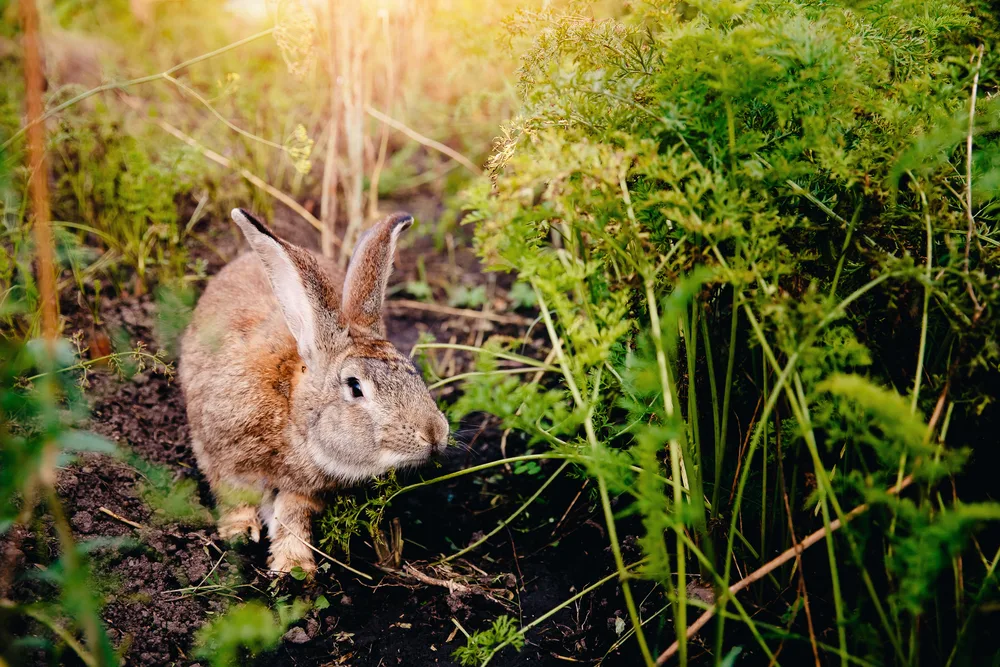
Spraying such a solution on plants can also stop rabbits, deer and other creatures from eating them. So if you have a particular problem with these pests, it could be something to try.
It is not a fool proof solution, but may keep them off your most prized plants.
18. To Keep Wildlife Away From Your Trash
Interestingly, some gardeners have also found that Epsom salts, sprinkled around your bins, can keep raccoons out of your trash.
For some reason, it seems to repel these little bandits. So if raccoons are a problem where you live, why not try this to see if you can get them to go elsewhere?
19. To Remove a Splinter
Gardening can sometimes be a dangerous pursuit. You can get all sorts of scratches, scrapes and grazes as you deal with your plants, and splinters can be a common occurrence.
For hard to remove splinters, soaking your hand in a solution of water containing 2 tbsp of Epsom Salt can increase the osmotic pressure of the skin and help draw out the splinter.
20. To Make Bath Bombs for a Relaxing Soak at the End of a Hard Day’s Gardening
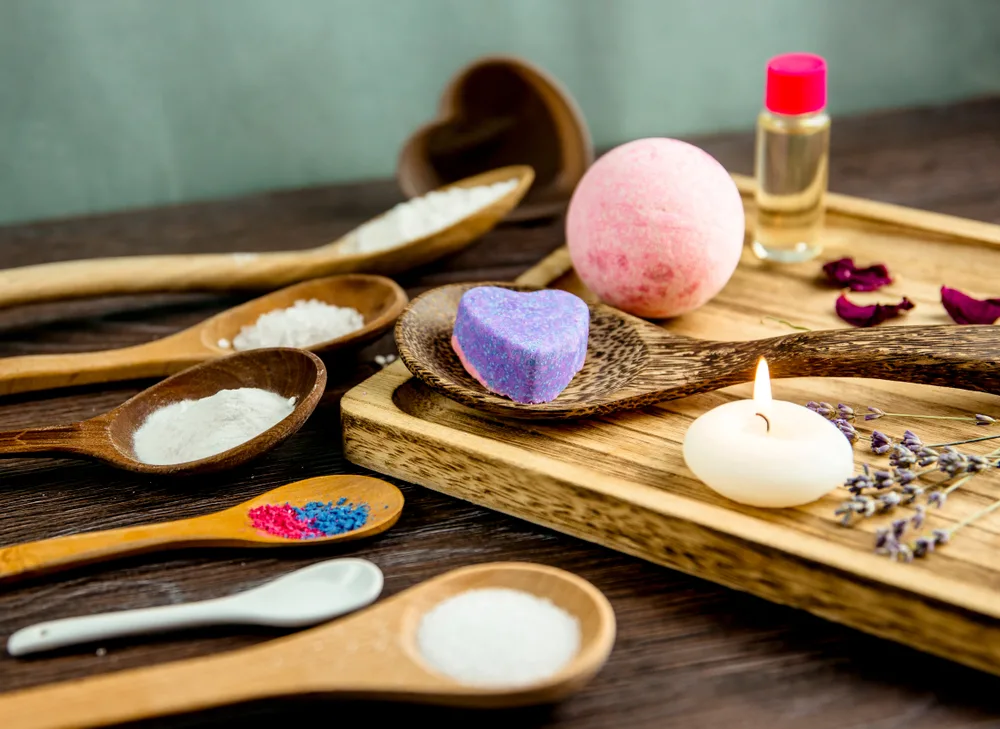
Finally, one final way to use Epsom salts is to make a reward for all your efforts in the garden.
Epsom salt is sometimes used as an ingredient in bath bombs. (And there are all sorts of ingredients from your garden that you could also use – lavender, rose petals, mint… and more…)
So why not relax, unwind and take a soak? Take care of the gardener as well as the garden!
It is important to realize that Epsom salt should not be overused. But when used judiciously, it really can be beneficial in a garden in many different ways.
Buying Epsom Salt

Epsom salt is most commonly marketed as a natural ingredient for a relaxing bath, but the same product works for the garden too.
This bulk bag of Epsoak Epsom Salt is our top pick. Make sure you choose the unscented option.

Get the famous Rural Sprout newsletter delivered to your inbox.
Including Sunday musings from our editor, Tracey, as well as “What’s Up Wednesday” our roundup of what’s in season and new article updates and alerts.

